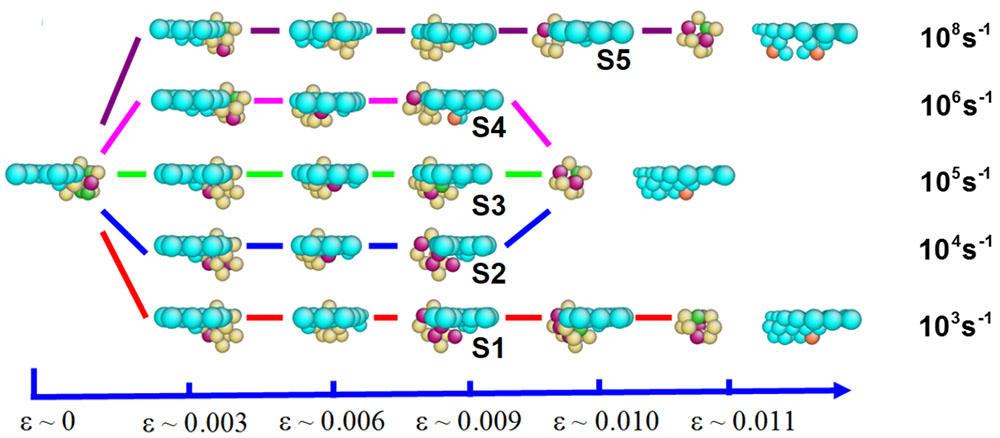
A recent research by U-M ME Ph.D. student Zhiton Bai and Assistant Professor Yue Fan, entitled “Abnormal Strain Rate Sensitivity Driven by a Unit Dislocation-Obstacle Interaction in bcc Fe,” was published in the March 2018 Physical Review Letters. It is a known fact that interactions of defects with dislocations govern the most important physical properties and plastic deformation of structural materials. However, predicting the interaction mechanisms and critical stress from the atomic level over a wide rand of strain rates has been a longstanding challenge in the materials science. This is because the low strain rate behavior is out of reach of the timescales obtainable by the traditional atomic scale simulation methods such as molecular dynamic.
In this study, a novel computational framework based on the concept of potential energy landscape has been employed, which enables the investigation of dislocation-defect interactions at more realistic strain rates while still retaining the atomic details. In particular, a local interaction between an edge dislocation and a vacancy-type obstacle in BCC Fe has been studied, over a wide range of strain rates from 108s-1 down to 103s-1. Very surprisingly, a non-monotonic correlation is found between the critical resolved shear stress (CRSS) of the system and applied strain rates. As strain rate increases, the CRSS first decreases and then increases with a minimum at the condition of 105s-1. This suggests a negative strain rate sensitivity (nSRS) at low strain rate regime, which could be responsible for materials’ degradations such as the non-uniform deformation and mechanical instabilities.
For a long time, the major reason for the nSRS phenomenon has been attributed to the global diffusion and concentration of small defects around the dislocation core. However, in this work, Bai and Fan demonstrated that even the local interaction between a single obstacle and dislocation might also lead to the nSRS, because of the different intermediate microstructures emerged due to the complex interplays between thermal activation and applied strain rate. Such a newly identified mechanism, together with the established global diffusion scheme, enable a more comprehensive understanding towards the dislocation-mediated plasticity, which might shed light on the predictive design of advanced structural materials to be used in complex environments.
To view the full study, click here https://journals.aps.org/prl/abstract/10.1103/PhysRevLett.120.125504
